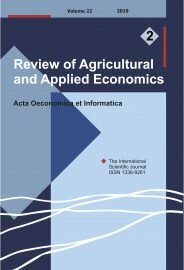KEYWORDS:
Land deals, semi-intensive, intensive, low intensive system
DOI NUMBER:
10.15414/raae.2019.22.02.18-25
ABSTRACT:
The upsurge of land deals in Northern Ghana is a concern to many stakeholders. In order to reduce the effects of land deals on livelihoods, farmers resort to adopting semi-intensive, intensive or low intensive farming systems. Using a multinomial logit model, this study assessed how land deals influence the decision of a farm household to choose any of the farming regimes. Factors that influence farmers’ decision to choose intensive as against semi-intensive methods of farming are farm size, awareness of land grabbing, intension of cultivating part of grabbed land, number of adults, household expenditure, location, remittances and land grabbed investment type. On the other hand, households’ engagement in low intensive as compared to semi-intensive methods of farming are influenced by age, fallowing period, education, remittances, and household expenditure. Land deals must be accompanied by efforts to diversify livelihoods of smallholder farmers away from land-based systems. This would require skills training for rural peasant farmers to enable them take up emerging livelihood opportunities. In order to safeguard the interests and livelihood of rural peasants, agricultural investment programmes must make community-investor partnership a key condition for gaining access to government and donor incentives.
Please Cite this Article as:
Prince NKETIAH, Michael AYAMGA, Franklin N. MABE (2019) Land Deals And Small-scale Intensive Farming Decisions . Review of Agricultural and Applied Economics. XXII (Number 2, 2019): 18-25. doi: 10.15414/raae.2019.22.02.18-25
URL for sharing:
https://roaae.org/1336-9261/doi/abs/10.15414/raae.2019.22.02.18-25
FULL TEXT PDF:
▼ direct download link| view online in fullscreen ▲

